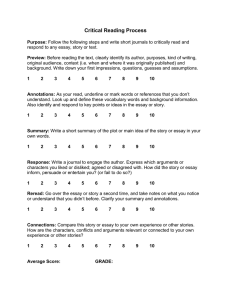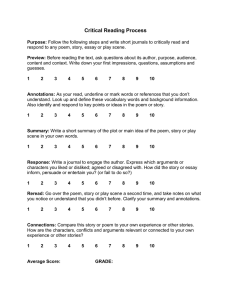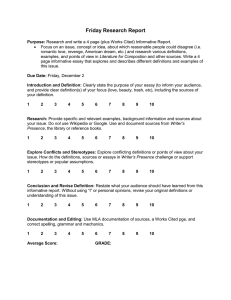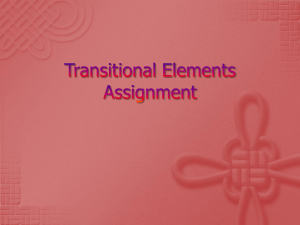Critical Reading Process.doc
advertisement
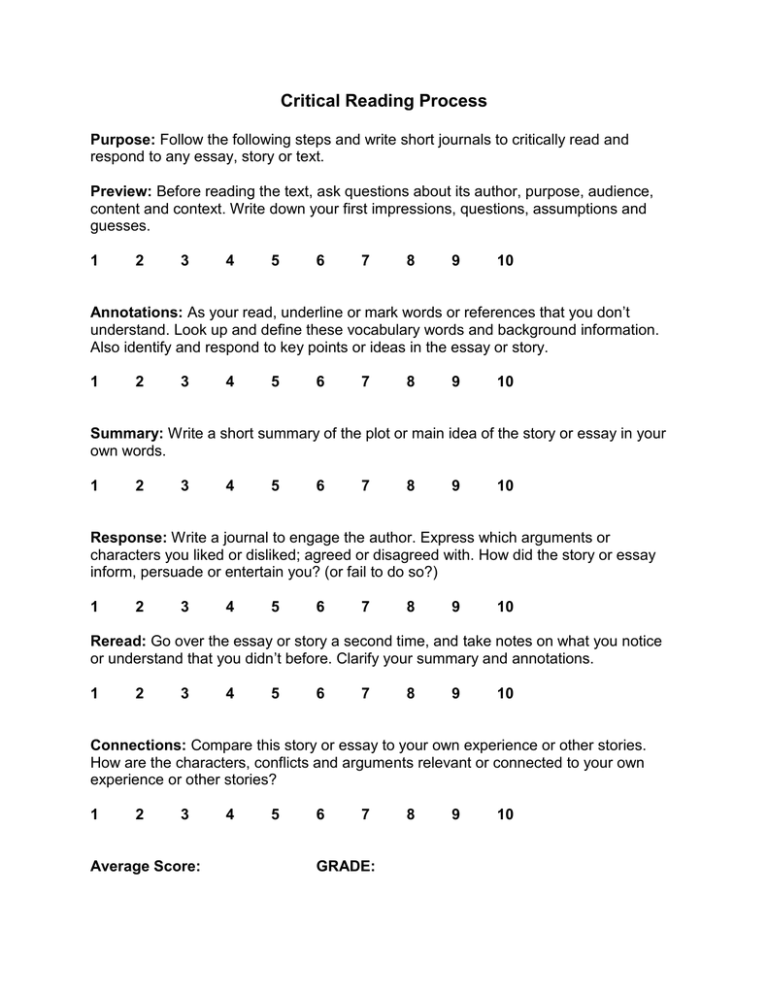
Critical Reading Process Purpose: Follow the following steps and write short journals to critically read and respond to any essay, story or text. Preview: Before reading the text, ask questions about its author, purpose, audience, content and context. Write down your first impressions, questions, assumptions and guesses. 1 2 3 4 5 6 7 8 9 10 Annotations: As your read, underline or mark words or references that you don’t understand. Look up and define these vocabulary words and background information. Also identify and respond to key points or ideas in the essay or story. 1 2 3 4 5 6 7 8 9 10 Summary: Write a short summary of the plot or main idea of the story or essay in your own words. 1 2 3 4 5 6 7 8 9 10 Response: Write a journal to engage the author. Express which arguments or characters you liked or disliked; agreed or disagreed with. How did the story or essay inform, persuade or entertain you? (or fail to do so?) 1 2 3 4 5 6 7 8 9 10 Reread: Go over the essay or story a second time, and take notes on what you notice or understand that you didn’t before. Clarify your summary and annotations. 1 2 3 4 5 6 7 8 9 10 Connections: Compare this story or essay to your own experience or other stories. How are the characters, conflicts and arguments relevant or connected to your own experience or other stories? 1 2 3 Average Score: 4 5 6 7 GRADE: 8 9 10 Average Score 1-2 = F (0-50) Student either did not complete this assignment, or did not follow the directions. Purpose: No clear purpose, introduction or conclusion. Organization: No logical connections or transitions Content: More than 10 factual inaccuracies. Editing: More than 10 major grammar or editing errors. 3-4 = D (50-69) Student completed assignment, but performed below average. Purpose: Poorly stated purpose, introduction or conclusion. Organization: Unclear connections or transitions. Content: 5-10 factual inaccuracies. Editing: 5-10 major grammatical or editing errors. 5-6= C (70-79) Student completed the assignment; performed average or minimal work. Purpose: Clearly stated purpose, introduction and conclusion. Organization: Clear transitions between paragraphs. Content: Clear summary Editing: No major grammar errors. A few spelling or punctuation mistakes. 7-8= B (80-89) Student completed the assignment, and performed above average. Purpose: Clearly stated purpose, and a thesis, introduction and conclusion. Organization: Clear transitions and connections between ideas. Content: Detailed descriptions of plot, characters, relationships. Editing: No major grammar errors or spelling mistakes. 9-10 = A (90-100) Student performed exceptional and original work and critical thinking. Purpose: Clear and original purpose, thesis and critical thinking. Organization: Original connections and relationships. Content: Detailed descriptions, persuasive arguments and personal response. Editing: Complete portfolio
